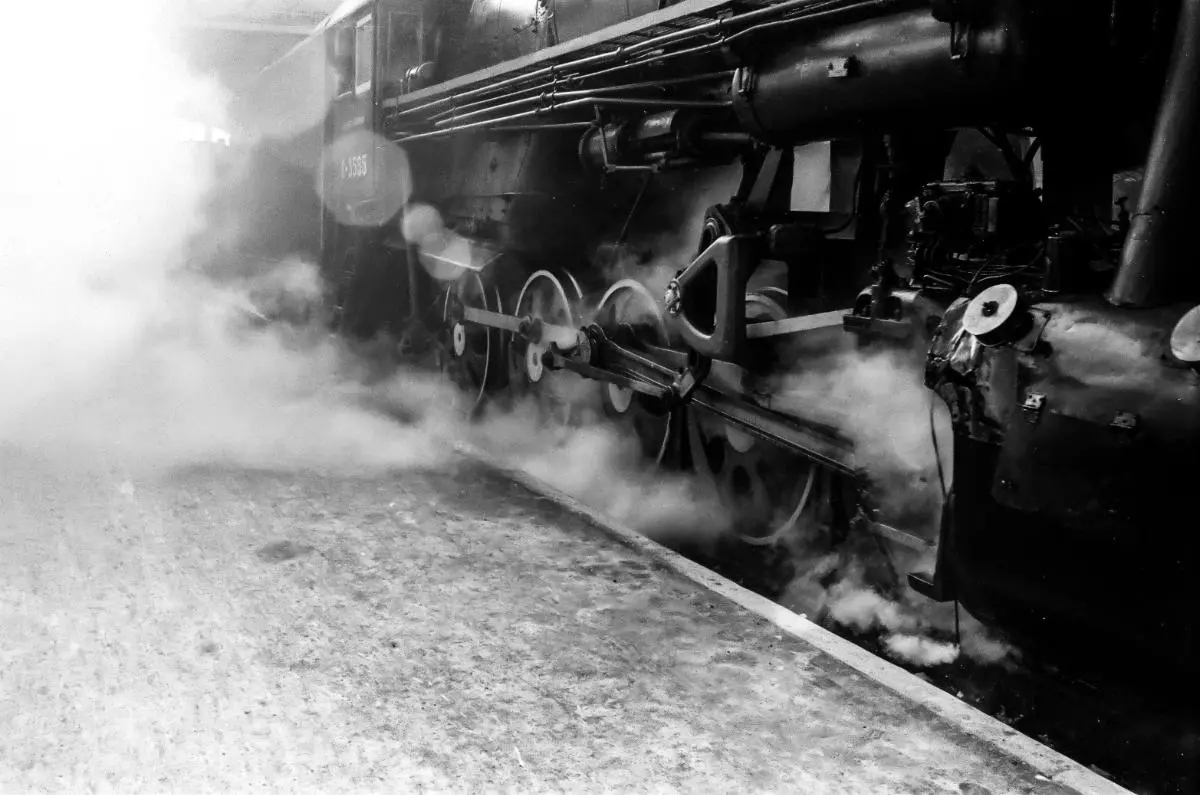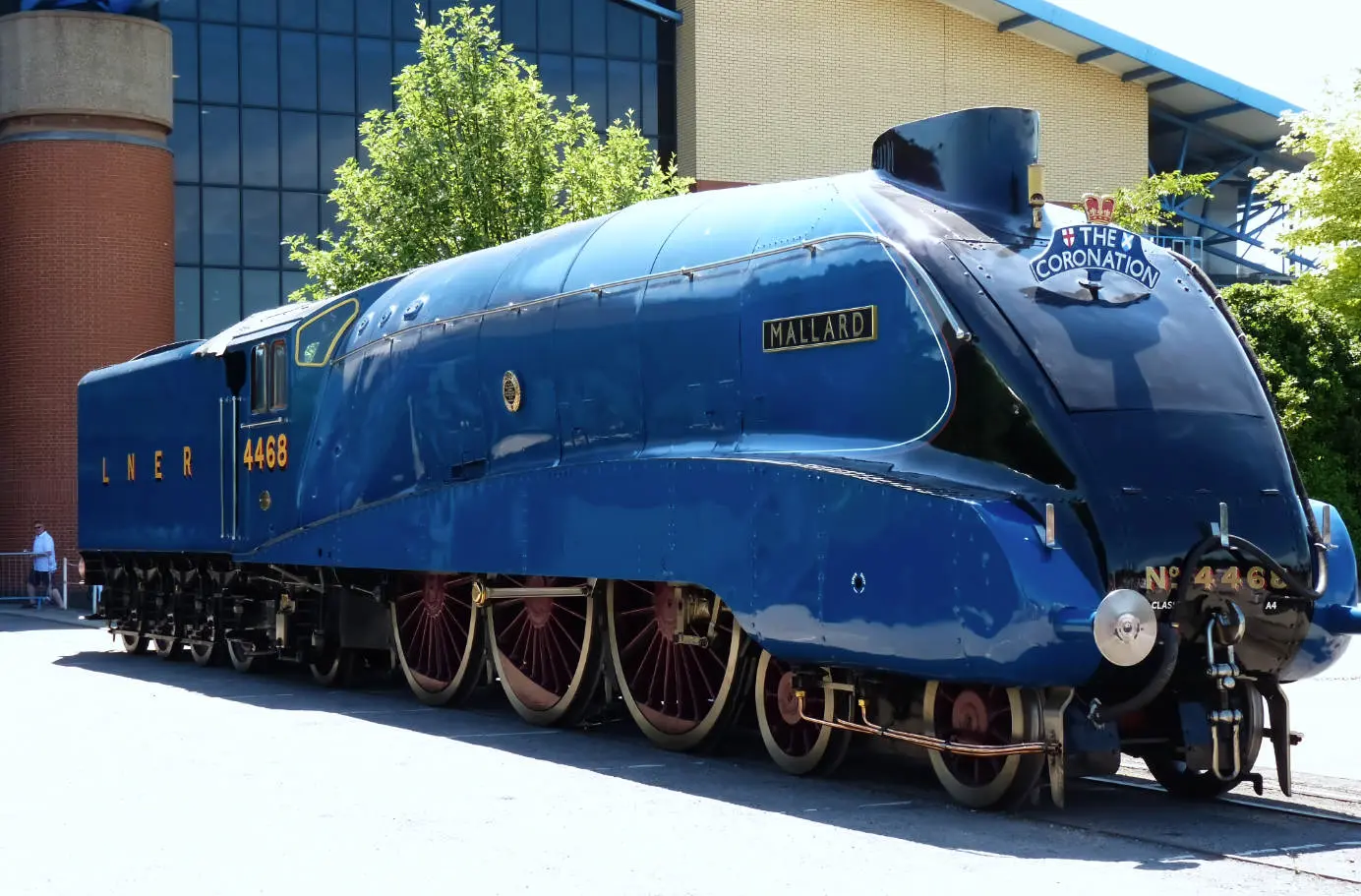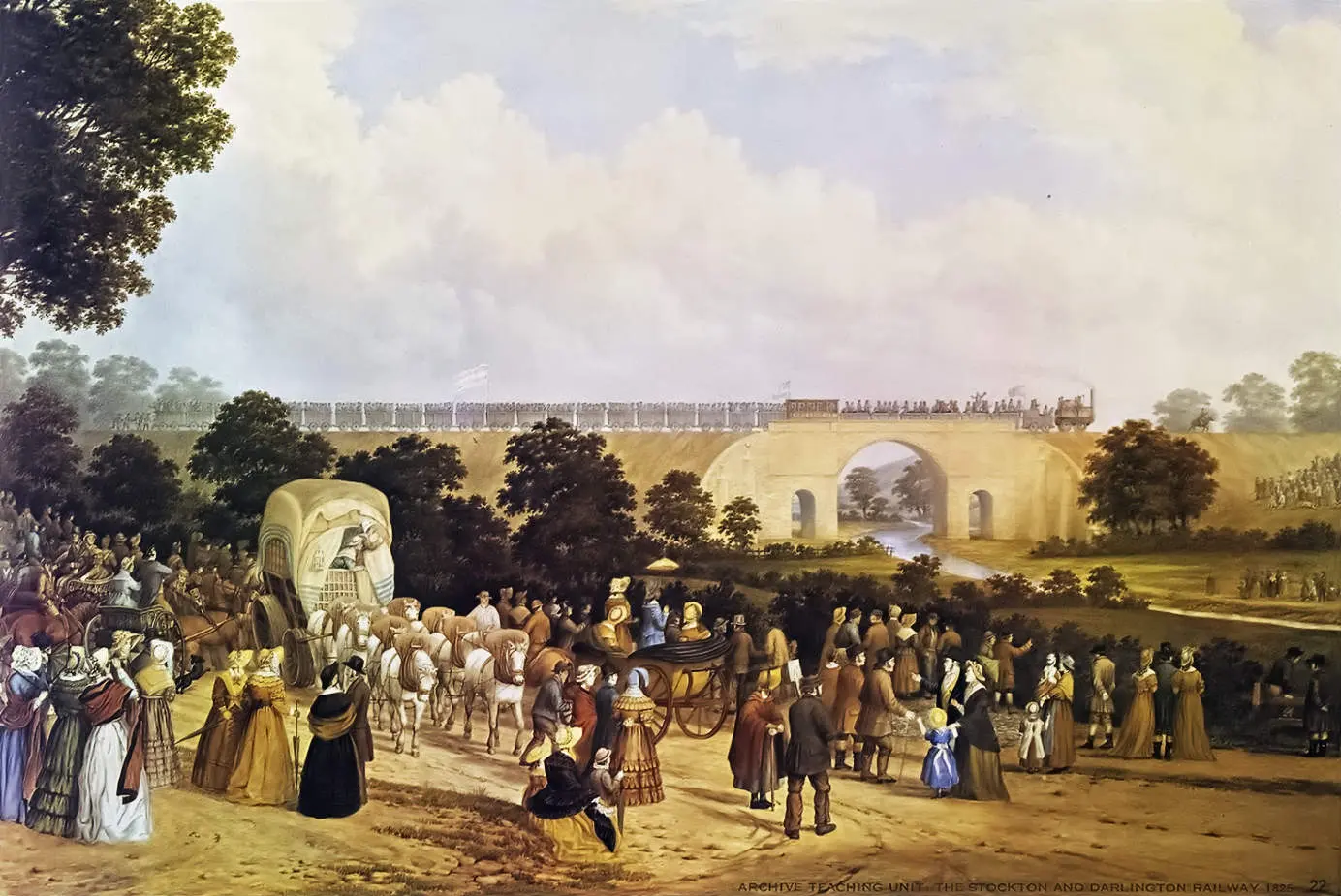Discovering the History of the Flying Scotsman
Explore the fascinating history of the iconic locomotive, the Flying Scotsman. From its construction to record-breaking runs, learn about the legacy of this famous train.

In the world of railways, few names are as legendary as the Flying Scotsman. This iconic steam locomotive has captivated train enthusiasts and the public alike for decades, earning its place in history through its remarkable achievements and resilience. As we delve into the Flying Scotsman's history, we'll explore its inception, the groundbreaking records it set, and its enduring legacy in modern times.
About the Flying Scotsman Locomotive
The Flying Scotsman, a symbol of British engineering excellence, was built in 1923 as part of the A1 class designed by Sir Nigel Gresley. It became a flagship of the London and North Eastern Railway (LNER) and was soon synonymous with speed and luxury on the tracks. Over the years, this majestic locomotive was renowned for its distinctive apple green livery and charming style, captivating the hearts of millions. After nearly 40 years of service, the Flying Scotsman retired from British Railways in 1963, having covered an impressive 2.08 million miles.
The locomotive was initially numbered 1472, but it was renumbered 4472 in 1924 and given the name "Flying Scotsman" after the prestigious London to Edinburgh service. One of its most famous features was the corridor tender, introduced in 1928, which allowed the crew to switch shifts without stopping the train, thus enabling continuous travel over long distances. This innovation was a significant step in improving operational efficiency and passenger convenience.

In its early years, the Flying Scotsman set several speed records and was often in the limelight, appearing at exhibitions and fairs. It was a centerpiece at the British Empire Exhibition at Wembley in 1924 and 1925, where it was admired by countless visitors. Its fame was not confined to the United Kingdom; the Flying Scotsman embarked on international tours, including a highly publicized trip to the United States in 1969, where it captured the imagination of American audiences.
Throughout its operational life, the Flying Scotsman underwent numerous modifications and upgrades to maintain its status as a premier locomotive. These changes included improvements to its boiler, cylinders, and other mechanical components, ensuring that it remained at the forefront of railway technology for decades. Its combination of cutting-edge engineering and timeless design has secured its place as one of the most beloved and iconic steam locomotives in history.
The Birth of the Flying Scotsman
The birth of the Flying Scotsman was a watershed moment in the annals of British railway history. Crafted as a response to the burgeoning demand for faster, more efficient rail services, this remarkable locomotive was christened after the daily 10:00 am London to Edinburgh rail service. This ambitious project was conceived not only as a display of engineering prowess but also as a definitive statement of intent to revolutionize rail travel by significantly reducing journey times and enhancing passenger comfort.

The early 1920s were a period of rapid advancement in railway technology, and the Flying Scotsman was at the forefront of this evolution. Designed by Sir Nigel Gresley (who also designed the iconic "Mallard" locomotive), the locomotive was part of the A1 class and was constructed at Doncaster Works in 1923. It was initially numbered 1472, reflecting its place in the production line, but was soon renumbered 4472 in 1924, aligning with its new identity and service route.
One of the most pioneering features introduced with the Flying Scotsman was the corridor tender in 1928. This innovative design allowed crew members to traverse between the locomotive and the passenger cars without halting the train, thus enabling continuous travel over extended distances. This breakthrough dramatically improved operational efficiency and set new standards in passenger service, solidifying the Flying Scotsman’s reputation as a cutting-edge marvel of its time.
Upon its debut, the Flying Scotsman quickly became synonymous with speed, luxury, and reliability. Its introduction marked a significant leap forward in rail travel, providing a level of service that was both unprecedented and eagerly welcomed by the traveling public. The locomotive's sleek design, combined with its capacity for sustained high speeds, made it an immediate icon on the tracks. It became a symbol of British ingenuity and ambition, capturing the imagination of the public and rail enthusiasts alike.
The Flying Scotsman’s inaugural run and the subsequent years of service epitomized a new era in rail travel, making it a legend in its own right and setting the stage for its storied career in the decades to follow.
Early Years and Initial Achievements
Upon its debut, the Flying Scotsman swiftly garnered acclaim for its engineering excellence and operational prowess. It was the first locomotive to be assigned to the prestigious non-stop service between London and Edinburgh, a route that demanded both speed and reliability. This non-stop service was a groundbreaking development, eliminating the need for refueling stops and significantly reducing travel time for passengers. The Flying Scotsman’s ability to cover such long distances without stopping was made possible by its innovative corridor tender, which allowed the crew to move between the locomotive and passenger cars while the train was in motion.

In the early years, the Flying Scotsman was frequently in the spotlight, often featured in exhibitions and high-profile events. One notable appearance was at the British Empire Exhibition in Wembley during 1924 and 1925, where it was admired by thousands of visitors. This exposure helped cement its status as an icon of British engineering.
The locomotive was not only a marvel of engineering but also a symbol of luxury and speed. With its striking apple green livery and sleek design, it quickly became a favorite among passengers and railway enthusiasts alike. Its reputation for reliability and performance set it apart from other locomotives of its time, making it a benchmark for excellence in railway services.
During this period, the Flying Scotsman also set several speed records, showcasing its capability to maintain high speeds over extended distances. This was a testament to the advanced design and engineering that went into its creation. The locomotive’s performance was a significant factor in its enduring legacy, as it continued to impress and inspire both the public and those within the railway industry.
The early years of the Flying Scotsman were marked by a series of notable achievements that highlighted its significance in the world of rail transport. Its combination of cutting-edge technology, aesthetic appeal, and operational efficiency made it a standout locomotive, paving the way for future advancements in railway travel.
Breaking Records and Innovations
The Flying Scotsman made headlines worldwide when it achieved a groundbreaking feat on November 30, 1934. It became the first steam locomotive to reach the officially authenticated speed of 100 miles per hour (161 km/h). This incredible achievement was a testament to the locomotive's engineering marvel and set a new benchmark in the world of steam trains.
Beyond its record-breaking speed, the Flying Scotsman was a pioneer in technological advancements that significantly influenced railway transport. Its innovative design and engineering enhancements were critical in maintaining its competitive edge and operational efficiency. Over the years, various upgrades were implemented to improve its performance and reliability. These included enhancements to its boiler and cylinders, which were essential for maintaining high speeds and efficient operation.
The Flying Scotsman was also renowned for its corridor tender, introduced in 1928, which was a major innovation. This feature allowed crew members to move between the locomotive and passenger cars while the train was in motion, thereby eliminating the need for stops and enabling continuous travel over long distances. This technological breakthrough dramatically improved operational efficiency and set new standards in passenger service.

Throughout its illustrious career, the Flying Scotsman was frequently showcased at exhibitions and fairs, where it continued to capture the public's imagination. Its appearances at such events underscored its status as an icon of British engineering and innovation. Additionally, its international tours, including a highly publicized trip to the United States in 1969, showcased its technological prowess on a global stage and further cemented its legendary status.
The legacy of the Flying Scotsman's innovations extends beyond its operational life, influencing the design and functionality of future locomotives. Its blend of speed, efficiency, and cutting-edge technology made it a standout locomotive, setting the stage for advancements in railway travel that followed.
World War II and Post-War Challenges
During World War II, the Flying Scotsman, like many other locomotives, faced significant challenges as the demands on Britain's railways increased dramatically. The war effort required extensive use of rail for transporting troops, equipment, and supplies, placing an immense strain on the infrastructure and resources. Maintenance and upgrades became difficult due to resource shortages and the constant need for operational efficiency. Despite these hurdles, the Flying Scotsman continued to serve, showcasing the resilience and durability that had made it famous.
In the aftermath of the war, the railway industry underwent significant transformations. The rise of diesel and electric locomotives marked the beginning of a new era in rail transport, one that emphasized greater efficiency and lower operational costs. Steam locomotives, including the Flying Scotsman, faced obsolescence as the focus shifted toward more modern and economical forms of rail power.
Adapting to these changes was no easy feat for the Flying Scotsman. The post-war period was characterized by intense competition and a push for modernization. The iconic steam engine had to navigate a landscape that increasingly favored newer technology. Despite these challenges, it retained a special place in the hearts of the public and railway enthusiasts, who admired its storied history and engineering excellence.
In 1948, the nationalization of the railways under British Railways brought additional changes. The Flying Scotsman was renumbered and reclassified as part of the new system. Even as it faced the pressures of modernization, it continued to operate on key routes, maintaining its reputation for reliability and performance. However, by the early 1960s, the transition to diesel and electric locomotives was in full swing, leading to the Flying Scotsman's retirement from regular service in 1963.
Preservation and Restoration Efforts
The Flying Scotsman was spared from obscurity through extensive preservation and restoration efforts that aimed to keep its legacy alive. One of the most significant restoration projects for this iconic locomotive was completed in early 2016 and came at a cost of £4.5 million. This undertaking was a labor of love for those dedicated to keeping the spirit of this historic locomotive alive for future generations to appreciate and admire.

This restoration was not merely about cosmetic improvements; it involved a comprehensive overhaul to ensure that the Flying Scotsman could operate safely and efficiently in contemporary times. Experts and engineers meticulously worked on various aspects of the locomotive, including its boiler, mechanical systems, and iconic apple green livery. The restoration project aimed to bring the Flying Scotsman as close to its original condition as possible while incorporating modern safety standards.
Numerous enthusiasts and organizations rallied around the cause, contributing funds and expertise to the project. The locomotive's return to operational status was celebrated with great fanfare, drawing crowds of railway enthusiasts and the general public. Its revival was a testament to the dedication and passion of those who believed in preserving this piece of railway heritage.
Today, the Flying Scotsman serves as a moving museum piece, offering people the chance to experience a piece of history firsthand. It participates in special tours and events, allowing new generations to appreciate its significance and beauty. The locomotive's preservation and restoration efforts ensure that the Flying Scotsman remains a living legend, continuing to inspire and captivate audiences around the world.
Modern-Day Operations and Tours
The Flying Scotsman continues to enchant railway enthusiasts and the public by participating in special tours and events. One of its most notable achievements in recent years occurred on August 8, 1989, when it set the longest non-stop run for a steam locomotive, covering 422 miles (679 km) while on tour in Australia. on August 8, 1989, while on tour in Australia, the Flying Scotsman set the longest non-stop run of a steam locomotive at 422 miles (679 km).
The tours provide a unique opportunity for people to experience a piece of railway history in motion. As a moving museum piece, the Flying Scotsman allows new generations to appreciate its engineering marvel and historical significance. These excursions are meticulously planned to showcase the locomotive in all its glory, often drawing large crowds and media attention.

In addition to tours within the United Kingdom, the Flying Scotsman has been a part of international events, further enhancing its global reputation. These journeys not only celebrate the locomotive's storied past but also highlight its continued relevance and the passion it inspires among railway enthusiasts.
The Flying Scotsman’s modern-day operations are supported by dedicated teams of engineers and enthusiasts who ensure that it remains in prime condition. This ongoing maintenance is crucial for its operational safety and performance, allowing it to continue its legacy on the rails.
The Legacy of the Flying Scotsman
The legacy of the Flying Scotsman is a rich tapestry woven with tales of pioneering engineering, unparalleled achievements, and enduring popularity. Since its inception, it has symbolized the pinnacle of steam locomotive technology and British innovation. The locomotive's influence extends far beyond its operational years, leaving a lasting imprint on both the railway industry and popular culture.
Throughout its illustrious career, the Flying Scotsman has captured the imagination of countless enthusiasts and the general public. Its groundbreaking speed record of 100 miles per hour in 1934 set a new standard for steam locomotives, demonstrating the incredible capabilities of engineering during that era. This achievement, among others, cemented its status as an icon and continues to inspire awe and admiration.

The Flying Scotsman’s presence in international exhibitions and tours further amplified its legendary status. Its journey to the United States in 1969, for instance, brought British railway excellence to a global audience, sparking interest and admiration across continents. These international ventures showcased not only the locomotive's mechanical prowess but also the universal appeal of steam travel.
Cultural references to the Flying Scotsman abound, from literature and film to model railways and memorabilia. It has become synonymous with the romance and adventure of rail travel, evoking a sense of nostalgia for the golden age of steam. Its striking apple-green livery and elegant design continue to be celebrated in various forms, ensuring that the Flying Scotsman remains a beloved figure in the collective consciousness.
Interesting Facts
The Flying Scotsman has an array of fascinating anecdotes that contribute to its legendary status. For example, it was the first steam locomotive to officially reach 100 miles per hour in 1934, a feat that set a new standard for speed in rail travel. Its corridor tender, introduced in 1928, was an innovation that allowed the crew to switch shifts without stopping, revolutionizing long-distance rail travel.
The locomotive also had the distinction of being the star of the British Empire Exhibition in Wembley in 1924 and 1925, where it was admired by thousands. It even embarked on a tour of the United States in 1969, captivating American audiences with its grandeur and engineering excellence. This international journey cemented its status as a global icon of steam travel.
Another intriguing fact is that the Flying Scotsman was originally numbered 1472 before being renumbered 4472 in 1924. It was painted in its famous apple green livery, which became one of its most recognizable features. The locomotive has also appeared in various films and documentaries, further embedding it in popular culture.
In addition to its engineering feats and cultural impact, the Flying Scotsman has a unique operational history. During World War II, it continued to serve despite the immense strain on Britain’s railways, showcasing its resilience. After its retirement in 1963, it was saved from scrapping by dedicated enthusiasts and underwent extensive restorations, the most significant of which was completed in 2016 at a cost of £4.5 million.

The Flying Scotsman has also achieved the longest non-stop run for a steam locomotive, covering 422 miles during its tour in Australia in 1989. These interesting facts collectively paint a picture of a locomotive that is not only an engineering marvel but also a beloved cultural icon.
Conclusion
The Flying Scotsman is more than just a steam locomotive; it is a symbol of engineering prowess, innovation, and timeless elegance. Its journey from a groundbreaking marvel of the 1920s to a cherished piece of railway heritage demonstrates the remarkable resilience and adaptability of this iconic train. Throughout its storied career, the Flying Scotsman has broken records, pushed the boundaries of railway technology, and captured the imaginations of people around the world.
The extensive restoration and preservation efforts highlight the dedication of enthusiasts who have worked tirelessly to maintain its operational status. These endeavors ensure that the locomotive remains a living, breathing artifact of history, allowing new generations to experience the allure of steam travel.
Modern-day tours and special events featuring the Flying Scotsman continue to draw crowds, offering a nostalgic glimpse into a bygone era of rail transport. These excursions not only celebrate the locomotive’s rich history but also underscore its ongoing relevance and the passion it still inspires among railway aficionados.
The legacy of the Flying Scotsman is a testament to human ingenuity and the enduring charm of steam locomotion. Its story is one of continuous evolution, from setting speed records to becoming a global ambassador for British engineering. As a living monument to an extraordinary chapter in railway history, the Flying Scotsman continues to enchant and inspire, proving that some legends never fade.





